Until now we have only begun to come across
the Seasonic power supply units that are certified through the highest
standards in the high price segment. However, the units of the new G version
with 80 PLUS Gold certification belong to a product segment that is much more
affordable.
Seasonic’s former Gold-certified PSU
product series used to be expensive and the high-wattage power consumption
(except for the fanless models) and so, despite their great technical
standards, these products are still beyond the ordinary users’ reach.
However, the new models, including four PSU
models that have power consumption ranging from 360 to 650 watts and are priced
at a moderate level, which makes them interesting not only for computer
enthusiasts, who have leading many new gaming copyrights, but also for ordinary
users who need a high-quality and efficient power source for their computer.
The question here is whether the Seasonic is trying to retain its traditional
quality in these affordable PSUs or not.
We will check it by testing two products:
the junior 360W model (one of which does not have cables) and the main 550W
model.

Two
tested models
Although these models come from the same
product series, they are much more different in the designs and output power.
They are actually built on two different hardware platforms, and even the
difference in size. Therefore, we should consider each one separately.
Testing methodology
The following article gives a detailed
description of our testing methodology and device along with a brief
explanation of the specifications and testing of power source: X-bit Labs
Presents: Power Supply Units Testing Methodology. If you feel flooded with
numbers and concepts, then there are a lot of articles like this, refer to the
Methodology.
You are also able to go to the Cases / PSU
section to check out the reviews of all other PSU models we have tested in our
labs.
We will mark the actual power consumption
of three system configurations (discussed in the article PC Power Consumption:
How Many Watts Do We Need?) on the cross-load charts. That will help you find
out if the tested PSU can meet the requirements for the life-span of the PC.
Testing participants
Seasonic
SSR-360GP (G-360)
Packaging and accessories
The packaging of PSU was slightly spoiled
by an accident in our test labs, but the product did not matter.

The
product box
Compared with Seasonic’s leading PSU
series, the packaging looks smooth, lacking gold or shiny ad details. You can
see the letter G stylized on front of the box. That is the letter that Seasonic
decided to use to refer to its latest Gold-certified PSUs.
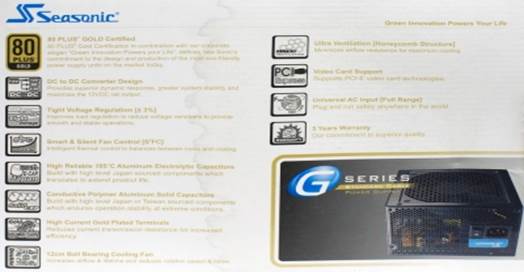
Information
on the box
A mass of advantages of the product that
the manufacturer wants us to know are listed on the back of the box. We
separated a few points as follows: the DC-DC power converters, close voltage
regulation rules (the output voltages only range within 3% of the required
level) and a 5-year warranty. The Gold-certified performance is a big advantage
for a PSU cheaper than $100 and is manufactured under a leading brand.
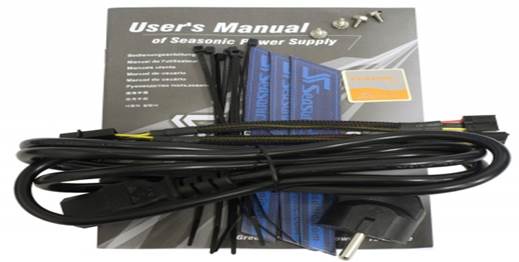
Supplied
accessories
The supplied accessories remain the same as
in the PSUs that have been much improved over the previous ones, except for
that the user manual is designed and printed in a simpler way.
Exterior design
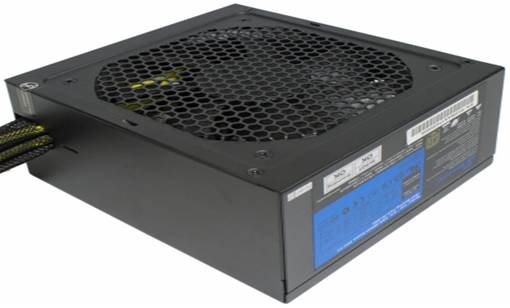
The
product image
Of course, the affordable-priced models are
not designed as splendidly as its more expensive counterparts. For instance, we
can see a piece of paper label here instead of being printed as in other
products. However, we are able to easily identify the manufacturer by the
external features of the PSU. The sunken fan mesh with large honeycomb-shaped
holes is very similar to what you can see in Seasonic’s more expensive Gold and
Platinum-certified series, although this mesh covers a fan that looks very
normal compared to the characteristic and separate shapes of Sanyo Denki.
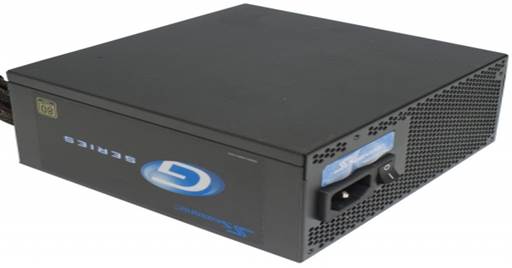
The
product image on the front
There is no difference from the leading
products on the back except for the color of the sticker with the
manufacturer's logo.
The PSU chassis consists of two parts: the
bottom covering panel with the front and the rear covering panels and the cover
on the side panels. The design is more complex than that of the leading PSUs
that is not done on this cheap-priced product with the aim to lower product
prices.
Circuit design
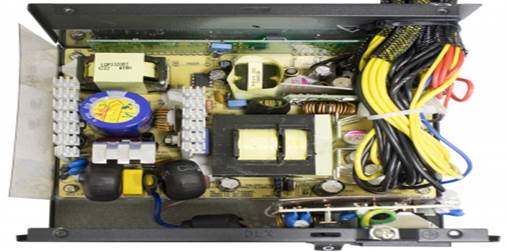
Circuit
design
It is actually a new platform. We have not
seen the interior of a PSU like that.
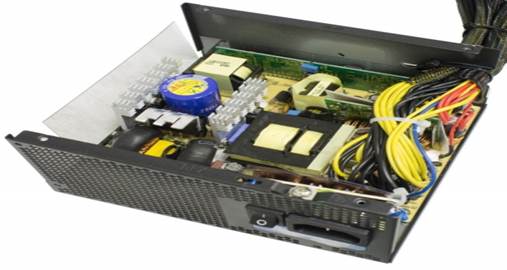
The
internal design
On the other hand, the overall circuit
design is also specific for a modern PSU. The Seasonic SSR-360GP features the
power factor editing, uses DC-DC converters to generate +3.3 and +5 volts, and
has very small heat sinks.

The
inner parts
The PCB circuit board only contains a
standby source chip ICE2QR4765. The equipment controller and monitoring chips
are placed in a long daughter card near the front panel of the case.
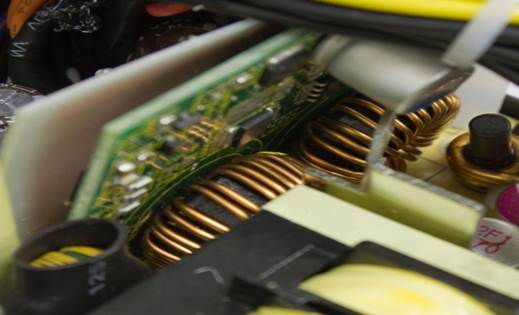
The
internal structure of the circuit board
The DC-DC converters are located on another
daughter card that you can see near the output circuits and capacitors.
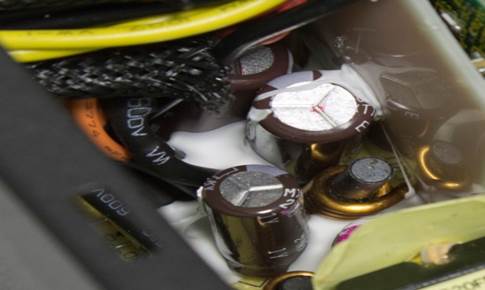
The
capacitors
There are the United Chemi-Con capacitors
located at the entrance ports to the source.

The
structure of the internal circuit
The Seasonic SSR-360GP also uses Rubycon
capacitors elsewhere and has a large blue Hitachi AIC, identifies the
temperature milestone up to 105°C at the inputs. Therefore, it is made sure the
fact that the capacitors are manufactured from Japan is true.